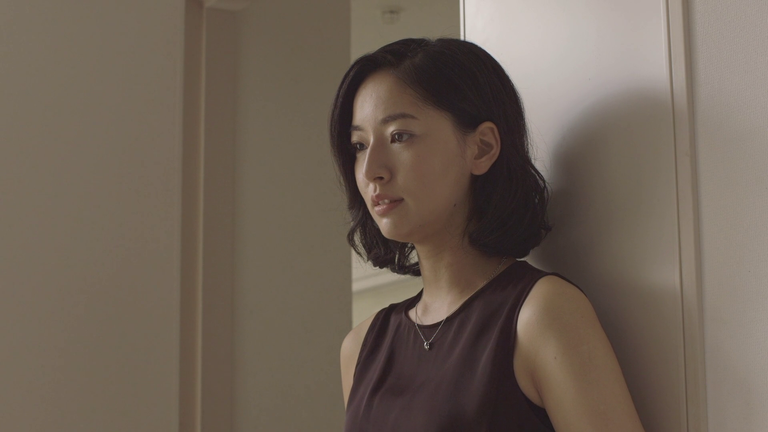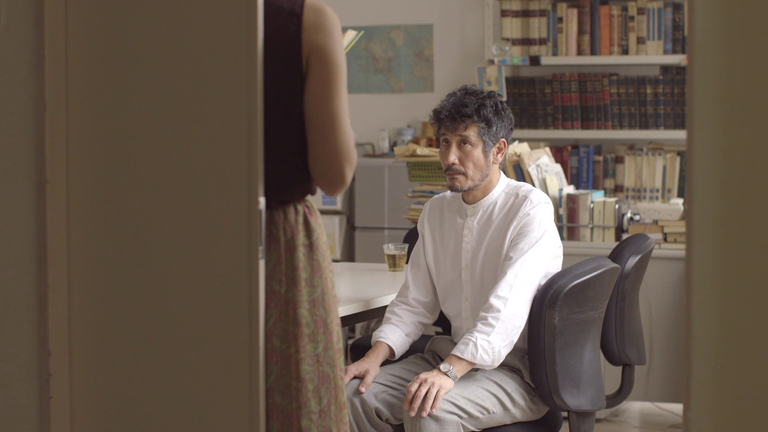'Wheel of Fortune and Fantasy' by Ryusuke Hamaguchi Review: Three unique stories display connection and empathy

Having dived into the works of Ryusuke Hamaguchi as of late, there's one thing within his stories that remains highly evident: the connection of people and how empathy -- and often the lack of -- plays such an important factor in our engagements with each other. Ryusuke Hamaguchi uses the fragility of love and relationships frequently to display these themes, but also shows the reality in which many aspects of love fall into despair and pain. And it is often these moments which are of interest to Ryusuke Hamaguchi: the tail end of relationships and how humans manage to cope with the pain and loss, often seeking some form of solace from others. Not necessary in the form of new relationships, but simply through friendships and company.
Ryusuke Hamaguchi's Wheel of Fortune and Fantasy tells three different stories with its runtime, much like the familiar style from Wong Kar-wai's Chungking Express in which one story ends and another begins with different characters, settings, and ultimately framing a new area of human behaviour and actions. I'm not typically one to enjoy this style, since it's very easy for one story to fall flat and ruin the rest of the runtime, however, Wheel of Fortune and Fantasy managed to hold my interest throughout. Each story and its characters were just as engaging as the last, and special in their own ways.
There was something deeply human in particular about its final short film. Which just might make it my favourite of the three. Though each story takes advantage of unique styles of directing and cinematography which certainly piqued my interest. Even reminding me of Hong Sang-soo's film Right Now, Wrong Then.

Wheel of Fortune and Fantasy starts off with a story that addresses the concept of acceptance and jealousy, where our actions often result in pain and suffering to even those we claim to care for. We see, in parts, different scenarios play out where our characters interact and display both of these emotions: the acceptance results in peace and going down different paths, and the jealousy results in hurting even more people. The directing and cinematography takes advantage of simple environments, both private and public, to display the ways in which we publicise our dramatic events. We even see how different events unfold under different reactions and dialogue, with the camera quickly zooming in on a character's face in a moment of emotion, and the scene simply starting over under different circumstances.
It's through this method of directing and mostly static cinematography that we manage to take a step back and witness how our actions unfold and result in different outcomes. Where the best scenario appears to be one in which all drama is avoided and people simply step away, even when our characters appear to be intentionally destructive and bitter. I think displaying the characters in this manner helped with the story's shorter runtime, as we're immediately given context and character development as the story progresses.
As the second story begins, under different characters and a different environment, it's evident that it's addressing a completely different set of themes from the prior. Instead, we're seeing how the selfishness of an individual results in the manipulation and suffering of others. Where one individual's lack of commitment creates a ripple effect in which additional problems arise. This sense of a lack of commitment comes in the form of an older woman being a student, but frequently attempting to seduce others and seek a more youthful life despite being married.
There's an interesting degree of visual storytelling where one of the main environments is the office of a professor in a university. From the start it's evident that he's a man that is very open, and promotes the idea of never hiding things from others. We see how his office door is forever remained open no matter what is happening or who he is talking to; this is even addressed later on in his published book, where he reveals incredibly intimate writings in an open manner. Like his open office, his stories are open, and void of secrecy. This makes him a prime victim for our female protagonist's manipulative ways of attempted seduction.
Much like the prior short story, the directing and cinematography utilises mostly static perspectives. Though we see fewer close-up shots, which would make the environments seem smaller and more tight. Clearly the intention with the story is to display a man's open nature which serves as a blockade against the attempts of seduction.

It's Wheel of Fortune and Fantasy's final short story which impacted me the most, however. It's a story that bases itself around the concepts of loss and regret, and how different people come together to address these issues as their stories from childhood revive lost nostalgia. It's through nostalgia that these two characters cross paths, and how the character development is revelead to the audience piece by piece.
The casting shows two completely different types of people that end up communicating and discussing their childhood events, ones of love and loss. Despite not actually knowing each other, the two display a connection formed through empathy as they act out the roles of lost loved ones, providing context and closure to each other, as well as the audience.
In particular, Ryusuke Hamaguchi's directing utilises the busy, modern pathways of Japan's cities as a backdrop for our most meaningful interactions with each other, where locations spring up new memories that live with us for decades to come, but serve as the same location for many other potential impactful events to take place. That even an escalator can result in people's eyes locking and emotion unfolding. And while such locations are not all that meaningful at a glance, they create stories of sadness and happiness.
Once Again propels this idea of basic, but impactful human interaction through the foundations of a computer virus which essentially turns people away from their smartphones and computers and places them back into a society that embraces community. Where these human interactions are a fundamental process in life but previously lost. The result is newfound compassion and empathy as people resdicover themselves through memory.

To create a feature length film is already an incredibly difficult thing to do successfully, but it's significantly more difficult to make a successful film that is formed by three individual short films, each with their own meanings and stories. Though it's through Ryusuke Hamaguchi's understanding of people and how important basic interaction among each other is in our lives that each of these short stories manage to remain both engaging and unique to the rest.
Each story is considered with such a degree of attention to the emotions and concepts it's promoting through its directing, writing, and performances that it's difficult to take your eyes off the screen even for a moment. I found myself wanting each story to roll off into the next, and was sad at the moment that a new story wasn't to follow the last.
My appreciation for each story is heightened by the fact that it's evident the production didn't have a large budget, either. This results in environments that look truly grounded and authentic, with some additions and tweaks for set design and basic control of lighting just to sweeten up the shot a little. In a way, it increases your awareness to the dialogue and the excellent writing that immerses you and brings you a closer understanding of the characters and their ways; even if their ways are somewhat malicious in times.
Hi @namiks,
Thank you for participating in the #teamuk curated tag. We have upvoted your quality content.
For more information visit our discord https://discord.gg/8CVx2Am
Your content has been voted as a part of Encouragement program. Keep up the good work!
Use Ecency daily to boost your growth on platform!
Support Ecency
Vote for new Proposal
Delegate HP and earn more
Me gustan los films que abordan las relaciones complejas entre los humanos, somos una suma de emociones y sentimientos, nuestra personalidad e instinto nos hará reaccionar ante diversos estímulos. Fue un gusto leerte, saludos.
Me parecen mucho más atractivas que otras películas. Me gusta ver las muchas formas en que nuestras emociones más básicas pueden mostrarse en diferentes situaciones.